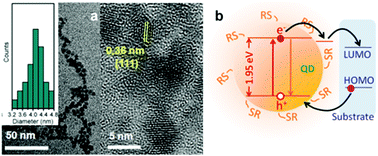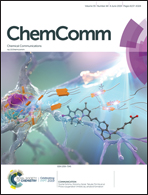Photocatalyzed borylation using water-soluble quantum dots†
Abstract
The synthesis of arylboronates by Sandmeyer-type reactions in the presence of water still remains a significant challenge. Herein, we report the use of water-soluble MPA-capped quantum dot (QD) photocatalysts for the borylation of diazonium salts in the presence of water. A biphasic system under mild acidic conditions remains critical to prevent decomposition and competitive disulphide bond formation. The present protocol offers a broader scope of substrates and borylating agents. Additionally, this catalytic system offers a significantly high turnover number (TON). The present methodology can effectively distinguish subtle reactivity differences between boronic acids and boronates. Mechanistic investigation suggests an excited-state electron transfer pathway.



 Please wait while we load your content...
Please wait while we load your content...